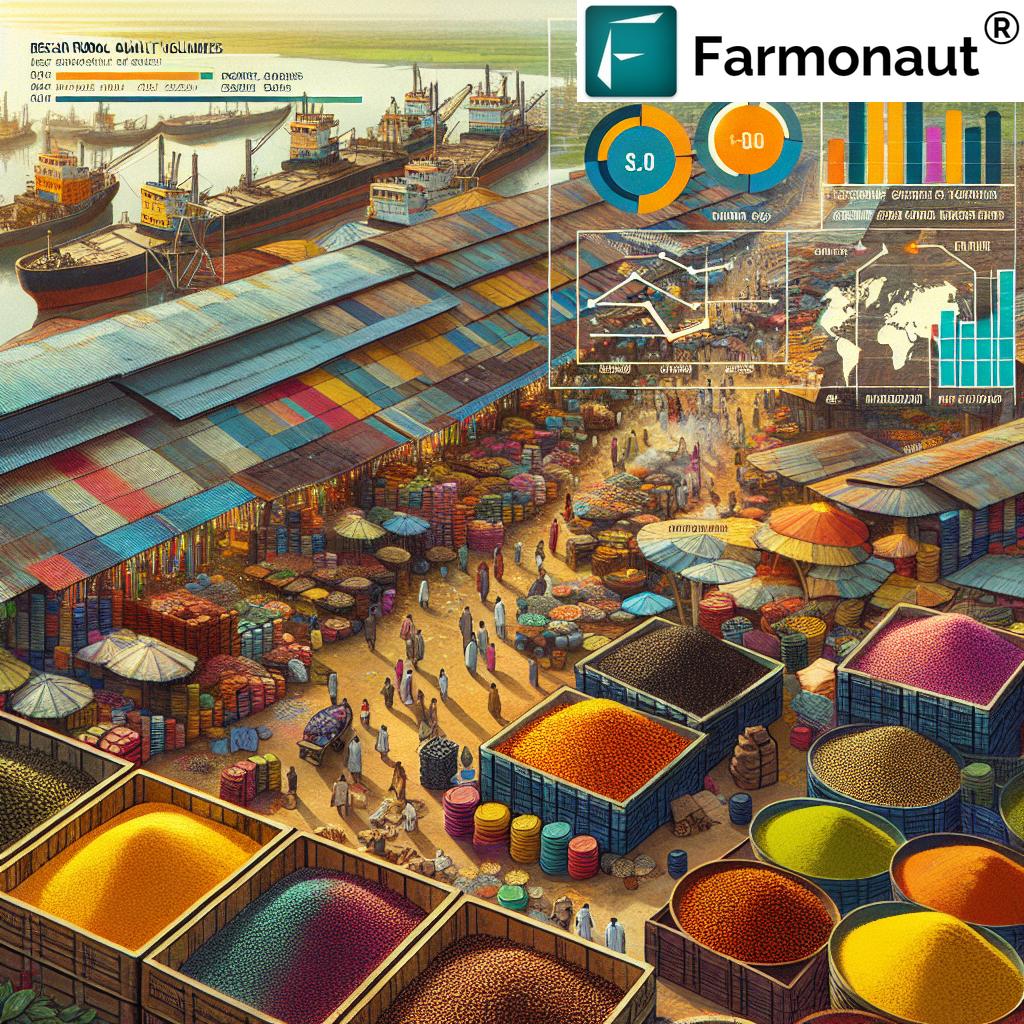US-India Trade Dynamics: Navigating Tariffs and Market Access in Bilateral Negotiations
“US-India trade reached $129.20 billion, with ambitious plans to double it to $500 billion by 2030 through ‘Mission 500’.”
As we delve into the complex world of international trade, we find ourselves at a critical juncture in US-India trade relations. The bilateral trade landscape between these two economic giants is undergoing significant transformations, driven by evolving tariff policies and market access negotiations. In this comprehensive analysis, we’ll explore the intricate dynamics shaping the $129.20 billion trade relationship between the United States and India, examining the challenges and opportunities that lie ahead.
The Current State of US-India Trade
The trade relationship between the United States and India has long been a cornerstone of bilateral ties, encompassing a wide range of goods and services. However, recent developments have introduced new complexities into this economic partnership. Let’s examine the key factors influencing the current state of US-India trade:
- Reciprocal Tariffs: The introduction of reciprocal tariffs by the US administration has created ripples across global trade, with India being no exception.
- Market Access Issues: Both countries are grappling with market access challenges, particularly in sectors such as agriculture, manufacturing, and services.
- Tariff Disparities: The significant difference in average tariff rates between the US and India has become a focal point of trade negotiations.
- Strategic Importance: Despite challenges, both nations recognize the strategic importance of their trade relationship and are working towards strengthening economic ties.
To better understand the tariff landscape, let’s take a look at a comparative analysis of key sectors affected by US-India trade dynamics:
| Product Category | US Tariff Rate (%) | India Tariff Rate (%) | Estimated Annual Trade Volume ($B) |
|---|---|---|---|
| Agricultural Products | 5 | 39 | 15.2 |
| Steel and Aluminum | 25 | 15 | 8.7 |
| Electronics | 3 | 20 | 22.4 |
| Textiles | 8 | 15 | 7.9 |
| Engineering Goods | 2 | 10 | 18.6 |
| Overall Average | 3.3 | 17 | 129.20 |
This table highlights the significant disparities in tariff rates between the US and India across various sectors, underscoring the challenges in achieving a balanced trade relationship.
The Impact of Reciprocal Tariffs
The concept of reciprocal tariffs, championed by the US administration, has introduced a new dynamic in US-India trade negotiations. Here’s how these tariffs are reshaping the trade landscape:
- Steel and Aluminum: The US has imposed a 25% tariff on steel and aluminum imports, directly impacting Indian manufacturers exporting to the American market.
- Smartphone Exports: Reciprocal tariffs could potentially lead to a 15% duty on smartphone exports from India to the US, up from the current 0%, potentially hampering the growth of this sector.
- Agricultural Products: The US has pointed to India’s high tariffs on agricultural imports, which stand at an average of 39% compared to the US rate of 5%.
These tariff adjustments are forcing businesses on both sides to reassess their export strategies and explore alternative markets. For Indian exporters, this presents both challenges and opportunities.
Navigating Market Access Challenges
Market access remains a critical issue in US-India trade negotiations. Both countries are working to address barriers that impede the free flow of goods and services. Key areas of focus include:
- Agricultural Trade: India’s stringent regulations on agricultural imports have been a point of contention, with the US seeking greater access for its farm products.
- Services Sector: The US is pushing for increased market access in sectors such as insurance, retail, and e-commerce.
- Digital Trade: As the digital economy grows, negotiations around data localization and cross-border data flows have gained prominence.
To address these challenges, both countries are engaged in ongoing negotiations to find mutually beneficial solutions that promote fair trade and market access.
The Role of Technology in Modern Agriculture
As we discuss agricultural trade and market access, it’s important to highlight the role of technology in modernizing farming practices. Companies like Farmonaut are at the forefront of this agricultural revolution, leveraging satellite technology and artificial intelligence to enhance productivity and sustainability.
Farmonaut’s satellite-based crop health monitoring system provides farmers with valuable insights into vegetation health, soil moisture levels, and other critical metrics. This technology can help farmers optimize resource usage, potentially reducing the need for certain agricultural imports and improving export competitiveness.
For more information on how satellite technology is revolutionizing agriculture, visit Farmonaut’s platform.
Opportunities Amidst Challenges
While the current trade dynamics present challenges, they also open up new opportunities for businesses in both countries:
- Alternative Markets: Indian exporters can explore new markets to mitigate the impact of US tariffs, leveraging upcoming free trade agreements with countries like the UK, EU, Oman, and New Zealand.
- Supply Chain Diversification: US companies looking to reduce reliance on Chinese imports may find India an attractive alternative, particularly in sectors like electronics, textiles, and engineering goods.
- Technology Collaboration: The growing emphasis on digital trade and technology cooperation presents opportunities for partnerships in areas such as artificial intelligence, blockchain, and data analytics.
“India’s higher average tariffs, especially on agricultural products, contrast sharply with lower US rates, impacting bilateral trade negotiations.”
To capitalize on these opportunities, businesses must stay informed about evolving trade policies and market trends. Utilizing advanced technologies like those offered by Farmonaut can provide a competitive edge in the global marketplace.
The Path Forward: Mission 500
Despite the challenges, both the US and India remain committed to strengthening their trade relationship. The ambitious “Mission 500” aims to double bilateral trade to $500 billion by 2030. To achieve this goal, negotiators are focusing on:
- Reducing Trade Barriers: Working towards lowering tariffs and non-tariff barriers to promote fair trade.
- Supply Chain Integration: Enhancing cooperation in critical supply chains, particularly in sectors like pharmaceuticals and advanced technologies.
- Digital Economy: Developing frameworks for digital trade and data governance that balance innovation with data protection.
- Sustainable Development: Promoting green technologies and sustainable practices in trade and investment.
As part of these efforts, both countries are negotiating a Bilateral Trade Agreement (BTA) aimed at addressing key issues and setting the stage for expanded economic cooperation.
The Role of Technology in Trade Facilitation
As we look towards the future of US-India trade, technology will play a crucial role in facilitating smoother transactions and enhancing transparency. Innovations in areas such as blockchain and artificial intelligence are already transforming supply chain management and trade finance.
Farmonaut’s blockchain-based product traceability solution, for instance, offers a glimpse into how technology can enhance trust and transparency in agricultural supply chains. This type of innovation could play a significant role in addressing concerns around food safety and quality in international trade.
To learn more about how Farmonaut is leveraging technology to improve agricultural practices and trade, visit their product traceability page.
Navigating Regulatory Complexities
One of the key challenges in US-India trade relations is navigating the complex regulatory landscape on both sides. This includes issues such as:
- Intellectual Property Rights: Strengthening IP protection to encourage innovation and investment.
- Standards and Certifications: Harmonizing standards to reduce technical barriers to trade.
- Customs Procedures: Streamlining customs processes to facilitate smoother trade flows.
Addressing these regulatory challenges will be crucial in realizing the full potential of the US-India trade relationship.
The Impact on Agricultural Trade
Given the significant disparity in agricultural tariffs between the US and India, this sector remains a focal point of trade negotiations. As both countries work towards finding a balance, technology can play a crucial role in enhancing agricultural productivity and sustainability.
Farmonaut’s crop area estimation technology, as demonstrated in the video above, can provide valuable data for policy-makers and trade negotiators. By accurately assessing crop production and yields, such tools can inform decisions on agricultural trade policies and food security measures.
For more information on how Farmonaut’s technology can assist in crop area estimation, visit their application page.
The Future of US-India Trade: Embracing Innovation
As we look to the future of US-India trade relations, it’s clear that innovation and technology will play a pivotal role in shaping new opportunities and addressing existing challenges. From blockchain-based supply chain solutions to AI-driven agricultural practices, the integration of cutting-edge technologies can help both countries achieve their trade objectives more efficiently.
The video above highlights the role of artificial intelligence in agriculture, showcasing how companies like Farmonaut are leveraging AI to transform farming practices. This type of innovation has the potential to not only improve agricultural productivity but also address some of the trade imbalances in the agricultural sector.
To explore how AI and other advanced technologies are being applied in agriculture, visit Farmonaut’s crop plantation and forest advisory page.
Conclusion: A Path Forward
As we navigate the complex landscape of US-India trade dynamics, it’s clear that both challenges and opportunities lie ahead. By focusing on reducing trade barriers, embracing technological innovation, and fostering greater cooperation, both countries can work towards achieving their ambitious trade goals.
Key takeaways for businesses and policymakers include:
- Stay informed about evolving tariff policies and market access negotiations.
- Explore alternative markets and diversify supply chains to mitigate risks.
- Leverage technology to enhance productivity, transparency, and competitiveness.
- Engage in ongoing dialogue to address regulatory challenges and promote fair trade practices.
As we move towards the goal of $500 billion in bilateral trade by 2030, the path forward will require creativity, flexibility, and a commitment to mutual benefit. By embracing innovation and working collaboratively, the US and India can forge a stronger, more resilient trade partnership that drives economic growth and prosperity for both nations.
FAQ Section
- Q: What is the current value of US-India trade?
A: The current trade relationship between the US and India is valued at $129.20 billion. - Q: What is the goal for US-India trade by 2030?
A: Both countries aim to double bilateral trade to $500 billion by 2030 through “Mission 500.” - Q: How do average tariff rates compare between the US and India?
A: India imposes an average tariff of 17%, while the US maintains a much lower average of 3.3%. - Q: What sectors are particularly affected by new US tariffs?
A: Steel, aluminum, and smartphone exports are particularly affected by new import duties. - Q: What opportunities have arisen for Indian exporters due to US-China trade tensions?
A: Indian exporters may find new opportunities in sectors such as electronics, textiles, and engineering goods.
For businesses looking to navigate these complex trade dynamics, leveraging advanced technologies can provide a significant advantage. Farmonaut offers a range of solutions that can help agricultural businesses optimize their operations and stay competitive in the global market.
Explore Farmonaut’s offerings:
Earn With Farmonaut: Affiliate Program
Earn 20% recurring commission with Farmonaut’s affiliate program by sharing your promo code and helping farmers save 10%. Onboard 10 Elite farmers monthly to earn a minimum of $148,000 annually—start now and grow your income!
By staying informed, leveraging technology, and adapting to changing trade dynamics, businesses can navigate the complexities of US-India trade and capitalize on emerging opportunities in this evolving economic landscape.
















